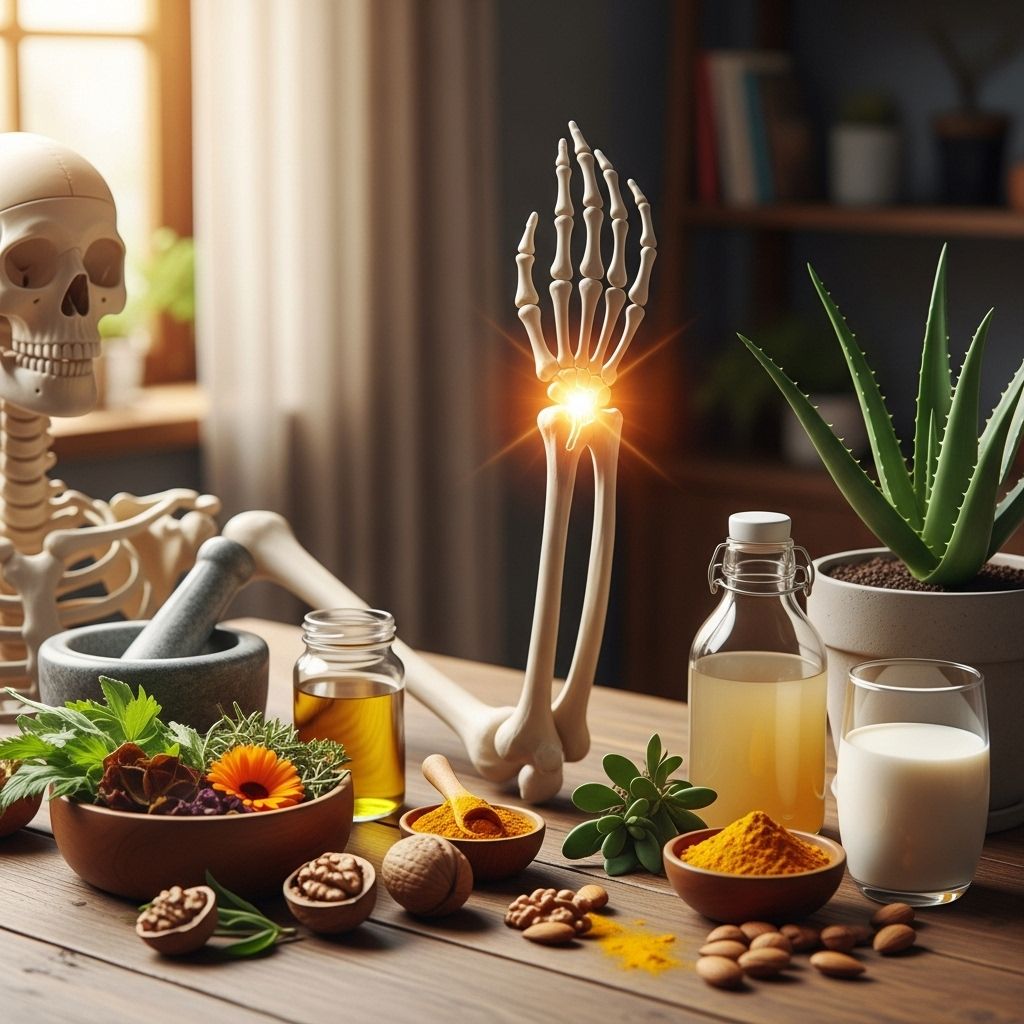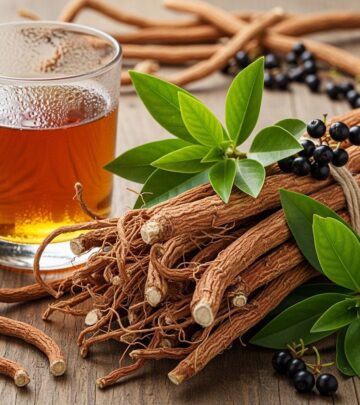Effective Home Remedies for Healing Bone Fractures Naturally
Natural nutrition, herbal extracts, and gentle movement work to accelerate recovery.

Bone fractures can be painful, debilitating, and slow to heal. While medical treatment is essential, certain lifestyle changes and home remedies can significantly support and accelerate the healing process. This comprehensive guide explores science-backed nutrition, supplements, gentle therapies, and traditional remedies that promote optimal bone recovery, aiming to boost your body’s innate healing abilities from the comfort of your home.
Understanding Bone Fractures and the Healing Process
Bone fractures occur when the force exerted on the bone exceeds its capacity, resulting in a break or crack. Healing is a dynamic process that involves the formation of new bone tissue, remodeling, and regeneration over several weeks or months. Factors such as age, nutrition, overall health, and the type of fracture influence recovery speed and quality.
Key Phases of Bone Healing
- Hematoma Formation: Blood accumulates at the injury site, initiating the healing process.
- Callus Formation: Soft then hard callus forms, bridging the fracture gap.
- Bone Remodeling: The new bone gradually matures and restores the bone’s original shape and strength.
Supporting each phase through targeted remedies and lifestyle adjustments can help maximize your healing potential.
Nutritional Strategies for Fracture Healing
Proper nutrition is the cornerstone of bone health and repair. Supplying your body with key nutrients aids in effective cellular regeneration, formation of new bone matrix, and reducing inflammation.
Essential Nutrients for Bone Repair
- Calcium: Fundamental mineral for bone structure and strength. Sources: dairy, leafy greens, almonds, sesame.
- Vitamin D: Facilitates calcium absorption and bone mineralization. Sources: sunlight, fortified dairy, egg yolks, fatty fish.
- Magnesium: Vital for converting vitamin D to its active form and supporting bone matrix formation. Sources: nuts, seeds, whole grains, green vegetables.
- Vitamin K: Required for bone protein synthesis and mineralization. Sources: leafy greens, broccoli, fermented foods.
- Protein: Provides amino acids for new bone tissue formation. Sources: lean meats, poultry, legumes, dairy, tofu.
- Vitamin C: Critical for collagen synthesis and repairing connective tissue. Sources: citrus fruits, berries, kiwi, peppers.
- Zinc: Essential trace mineral for bone tissue repair and immune support. Sources: shellfish, seeds, nuts, whole grains.
Bone-Healing Superfoods
- Milk and dairy products (yogurt, cheese)
- Leafy green vegetables (collard greens, spinach, kale)
- Almonds and sesame seeds
- Fatty fish (salmon, sardines, mackerel)
- Eggs
- Fresh fruits (papaya, oranges, strawberries, broccoli, bell pepper)
- Nuts and seeds (sunflower, flaxseed, pumpkin seeds)
Designing a diet rich in these foods can lay a robust foundation for efficient bone healing.
Supplements for Enhanced Bone Recovery
While whole foods are best, supplements may be necessary if dietary intake falls short or if your doctor recommends extra support. Always consult a healthcare provider before starting new supplements.
| Supplement | Purpose | Common Sources |
|---|---|---|
| Calcium | Boosts bone mineral density; key structural mineral | Calcium carbonate, calcium citrate |
| Vitamin D3 | Improves calcium absorption and bone synthesis | Cholecalciferol (capsules, drops) |
| Magnesium | Supports bone and muscle health | Magnesium citrate, glycinate |
| Collagen | Stimulates new bone matrix, increases elasticity | Hydrolyzed collagen powder, bone broth |
| Protein powder | Fulfills increased protein needs during recovery | Whey, plant-based protein powders |
| Multivitamin with zinc and vitamin K | Provides trace nutrients vital for repair | Daily multivitamin/mineral supplements |
Powerful Herbs and Natural Remedies
Throughout history, traditional remedies and herbs have been trusted to accelerate bone healing and provide pain relief. Some hold significant therapeutic value and can complement modern medical care:
- Comfrey (Symphytum uplandicum): Used externally in poultices to reduce swelling and discomfort; contains allantoin that stimulates cell growth.
Note: Use only under expert guidance, as some varieties can be toxic if ingested. - Horsetail (Equisetum arvense): Rich in silica, supports bone mineralization; consumed as tea or supplement.
- Turmeric: Anti-inflammatory agent; curcumin content reduces pain and swelling. Can be consumed in food, teas, or as a supplement.
- Arnica (Arnica montana): Used in homeopathic form or externally as a cream to ease trauma-induced pain and swelling.
Do not ingest without professional supervision. - Burdock Leaf: Applied as a hot poultice to reduce swelling and promote local healing.
- Cissus quadrangularis: An ayurvedic herb known for its fracture-healing benefits; available in supplement form.
How to Use Herbal Remedies:
- Herbal teas (horsetail, comfrey, turmeric)
- Topical poultices and creams (comfrey, arnica, burdock)
- Capsule or extract supplements (cissus quadrangularis, turmeric)
- Always use herbs under the supervision of a herbalist or healthcare provider
Omega-3 Fatty Acids for Inflammation and Healing
Omega-3 fatty acids have potent anti-inflammatory properties, helping to reduce swelling and pain following a fracture. They also contribute to bone mineral density and support overall tissue repair.
- Sources: Fatty fish (salmon, sardines), walnuts, flaxseeds, chia seeds
- Consider an omega-3 supplement if food intake is limited
Essential Oils and Aromatherapy
Certain essential oils, when used with proper dilution and technique, may ease pain and inflammation while supporting emotional well-being during recovery:
- Lavender Oil: Calms nerves, reduces pain perception
- Cypress Oil: Encourages circulation, reduces swelling
- Helichrysum Oil: Promotes tissue regeneration, anti-inflammatory
Apply essential oils with a carrier oil (such as coconut or almond oil) to the area surrounding the fracture (never directly on an open wound) and massage gently. Alternatively, use aromatherapy diffusers for relaxation.
Physical Therapy and Gentle Exercise
When safe and approved by your healthcare provider, gentle exercise and physical therapy are crucial to restoring mobility, strength, and preventing stiffness or muscle atrophy post-fracture.
- Simple movements like finger or toe flexion help maintain circulation
- Resistance bands: Light resistance exercises rebuild strength
- Pedal exercisers/mini bikes: Enable non-weight-bearing movement for lower limbs
- Swimming and walking: Low-impact activities to gradually restore strength
Work closely with a physical therapist to develop a personalized recovery program tailored to your injury and stage of healing.
Additional Lifestyle Tips for Better Bone Healing
- Rest and Elevation: Adequate sleep and elevating the affected limb help reduce swelling and support tissue repair.
- Avoid Smoking and Excess Alcohol: Both slow down bone healing and increase complication risks.
- Stay Hydrated: Proper hydration is essential for cellular activity and tissue regeneration.
- Avoid NSAIDs for Extended Periods: While helpful for pain, prolonged use of non-steroidal anti-inflammatory drugs may impede bone healing if overused. Always consult your doctor.
- Monitor Progress: Keep follow-up appointments and communicate with your medical team to manage complications or slow healing.
Complementary Therapies for Pain and Recovery
- Acupuncture: May improve pain control, boost circulation, and promote holistic healing when performed by a certified practitioner.
- Pulsed Electromagnetic Field Therapy (PEMF): Medical devices that emit targeted energy waves, used especially when healing is delayed.
Frequently Asked Questions (FAQs)
Q: Are home remedies enough to heal bone fractures?
A: Home remedies can support and enhance your recovery but should always be used as complementary to, not a replacement for, conventional medical treatment like casting, surgery, or physical therapy. Medical attention is essential for proper bone alignment and to prevent complications.
Q: How long does it take for a bone fracture to heal completely?
A: Most uncomplicated fractures heal within 6–12 weeks, but healing time depends on the type of fracture, age, nutrition, medical conditions, and adherence to rehabilitation guidelines.
Q: Can dietary changes really speed up bone healing?
A: Yes, clinical evidence shows that adequate nutrition, especially high in protein, calcium, vitamin D, and other micronutrients, supports bone tissue repair and can shorten recovery times.
Q: Which herbal remedies are considered safe for bone healing?
A: Comfrey (external use), horsetail (as tea), turmeric (diet or supplements), and arnica (topical use) are commonly used. Always consult a healthcare provider before starting herbal remedies, especially if you’re on medications or have chronic health issues.
Q: Is it safe to exercise after a bone fracture?
A: Gentle, physician-approved movement is vital during recovery to restore mobility and prevent stiffness. Start only when your doctor or therapist recommends it, and avoid activities that stress the healing bone.
Q: When should I see a doctor about a bone fracture?
A: Seek immediate medical care for any suspected fracture. Persistent pain, swelling, inability to bear weight, numbness, or delayed healing should prompt a follow-up with your healthcare provider.
Conclusion
While healing a bone fracture takes time, combining medical treatment with home remedies, a nourishing diet, and gentle natural therapies can significantly boost your body’s regenerative abilities. Always prioritize your safety and consult professionals before starting any new supplement or exercise. With the right blend of patience, care, and evidence-based natural remedies, you can support rapid and resilient bone healing from the comfort of your home.
References
- https://fracturehealing.ca/the-best-at-home-rehab-tools-to-support-fracture-recovery/
- https://neelamhospital.com/10-effective-natural-remedies-for-healing-bone-fractures/
- https://betterbones.com/fractures-and-healing/speed-up-fracture-healing/
- https://www.stylecraze.com/articles/effective-home-remedies-for-healing-bone-fractures/
- https://pmc.ncbi.nlm.nih.gov/articles/PMC5512407/
- https://orthoinfo.aaos.org/en/recovery/fracture-healing-video/
- https://www.stylecraze.com/articles/how-to-heal-a-sprained-ankle/
- https://jamanetwork.com/journals/jama/fullarticle/204412
- https://pmc.ncbi.nlm.nih.gov/articles/PMC5804294/
- https://orthoinfo.aaos.org/en/diseases–conditions/stress-fractures-of-the-foot-and-ankle/
Read full bio of Sneha Tete












